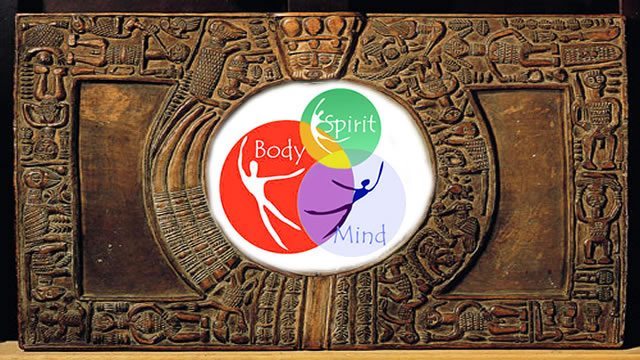Are any of the things that make up the world around us even ‘real?’
Work. 9-to-5. Love. Marriage. Success. Failure. Politics. God.
Or are they simply a bunch of made up labels and definitions, beliefs and values, rituals and social indoctrination created in our own heads?
One of the ways to accelerate personal growth is to see beyond the rules of the ‘Culturescape.’
When you understand that much of how we operate in the world is based on stuff that doesn’t really exist except within the cultural frameworks embedded in our mind, you gain incredible liberation.
You’ll understand that our brain has a bias toward negativity.
That’s one reason why it’s so hard for most of us to stay positive on a consistent basis. In fact:
- Most of your positive experiences are usually wasted on the brain – they’re pleasant only for brief moments, and typically don’t have any lasting value…
- On the other hand, it’s much more “natural” for us to remember and emphasize the “negatives” in life.
And here’s the biggest problem with that:
Recurring mental STATES gradually turn into actual neural TRAITS – they convert and engrave themselves into your mind/body-system as personal characteristics.
The good news is that that process works both ways – positive or negative.
So despite our brain’s natural inclination towards negativity, you can actually rewire your brain towards happiness.
And today I’d like to share the 4-step “H.E.A.L.”-technique to facilitate that process. Here’s how it works:
STEP #1: “H is for Have”
The idea of this step is to simply have a positive emotional experience, which you can do in two ways:
1) Simply notice when you’re already having some kind of positive emotional experience or pleasant sensation.
Truth is – they happen all the time as you move through your day… although you may not always notice or recognize them.
For example:
- You have a nice moment with another person – maybe a connection with your partner or your pet… or your boss praises you… or your child or significant other approaches you and says: “I love you!”
- Or when you’re busy, you could register the relief felt with the accomplishment of a (small) job well done — perhaps sending an important e-mail, finishing a conversation, or completing an interview…
- You could even be aware of something as simple as the sense of relaxation that comes with merely exhaling…
So we’re not necessarily looking for million-dollar moments here… Most positive experiences can be quite mild (1-2 on a scale of 10), which is more than enough to make this process work.
And here’s the second way:
2) Deliberately create a positive emotional experience. For instance:
- We’re easily inclined to take familiar experiences for granted… like a tasty cup of coffee, a touch by someone you care about, or a sense of inner peace or gratitude…
So instead, see if you can undergo them more like it’s the first time you do – much like a young child. That way, you deliberately bring a sense of novelty and freshness to the experience.
- Alternatively, here’s a nice trick from Vietnamese Zen Master Thich Nhat Hanh, who’s fond of saying:
“I want you to remember the last time that you had a really bad toothache. Remember what that was like. I’ve got wonderful news for you today: no toothache!”
So appreciate all of the “toothaches” that aren’t here at this moment.
(Bad example if indeed you do have a toothache, but you get the idea…)
In general, this first step “lights the fire,” as you get the positive experience going…
… which brings us to the second step:
STEP #2: “E is for Enrich”
Create more depth of engagement to enrich the experience. See if you can make it fuller. Here are three ways to accomplish this:
- Prolong the experience – spend time to hang out with it for a while. The longer you stay with it, the more it will sink in. (Aim for at least 10 seconds at a time.)
- Intensify the experience – let it land and sink in… deliberately savor the experience.
- Embody the experience – include multiple senses… for instance by visualizing emotional experience in some way, and/or physically enacting it (<– like sitting or standing up a little straighter, shouting with joy, breathing more fully, smiling softly, etc.).
Enjoy it as much as possible, and come back to it if your attention wanders.
This second step is like “keeping the fire burning,” and “adding fuel to it to make it burn more brightly”…
… which brings us to the third step:
STEP #3: “A is for Absorb”
This is where you let the experience actually land within, and really feel what it’s like to take in the good.
You’ll prime your neural memory systems… by intending and sensing that the positive emotional experience is really sinking into your system.
The most straightforward way to do this is through a symbolic visualization. For example:
- You can visualize it sinking in like water into a sponge – the water represents the experience, and the sponge is your mind/body-system.
- Or you can visualize putting a jewel in the treasure chest of your heart – the jewel represents the experience, while the treasure chest is your mind/body-system.
- Or see it as golden dust sifting down…
This third step is like “warming yourself by the fire”…
… which brings us to the fourth and final step:
STEP #4: “L is for Link“
There’s a famous saying in neuroscience that goes like this:
“Neurons that fire together, wire together.”
It means that any neurons that fire together repeatedly end up forming actual physical connections that become part of our neurological hard-wiring.
Now, of course, you don’t want to further hard-wire any tendencies toward negativity…
But this phenomenon actually allows for a neat little trick that helps you hard-wire positivity instead! Here’s what you do:
- Whenever you’re having a positive experience and you go through the steps above, also bring to mind something that has been troubling to you – like painful thoughts, feelings, or memories.
- Remember how “neurons that fire together, wire together.” So this way, you’ll gradually associate the positive experience with the negative material.
- Realize that “negatives” will no doubt keep coming up due to your brain’s natural “negativity bias”… However:
By deliberately linking positive experience to them this way, they’ll automatically bring up a positive backdrop to them – which soothes, eases and eventually replaces them.
And those are the four steps! Don’t worry if it’s a little overwhelming at first — with just a little practice, you’ll soon be able to do this on the fly!
Now you might be wondering…:
“How Often Should I Do This?”
You’ll gain the benefits of this technique by giving yourself the opportunity to go through this process just a handful of times each day.
So look for opportunities to go through this process 5-6 times per day… and you’ll soon discover how this 4-step technique can actually “hardwire your happiness”…
… and turn what used to be fleeting positive STATES into actual, automatic, lasting positive TRAITS!
We all have the power to change our brain for the better. If you don’t make use of this power yourself, other forces will shape your brain for you… including pressures at work and home, technology and media, pushy people, or the lingering effects of painful past experiences.
So I urge you to make use of that power! The “H.E.A.L.”- technique described above is a powerful way to do so!
Want to wire this in a faster and even more deeply and permanent way? Self-Empowerment Via The Principles of Ifa is a course that teaches you exactly how to manifest the life you desire to have.
>>>Take a look at the course here.





